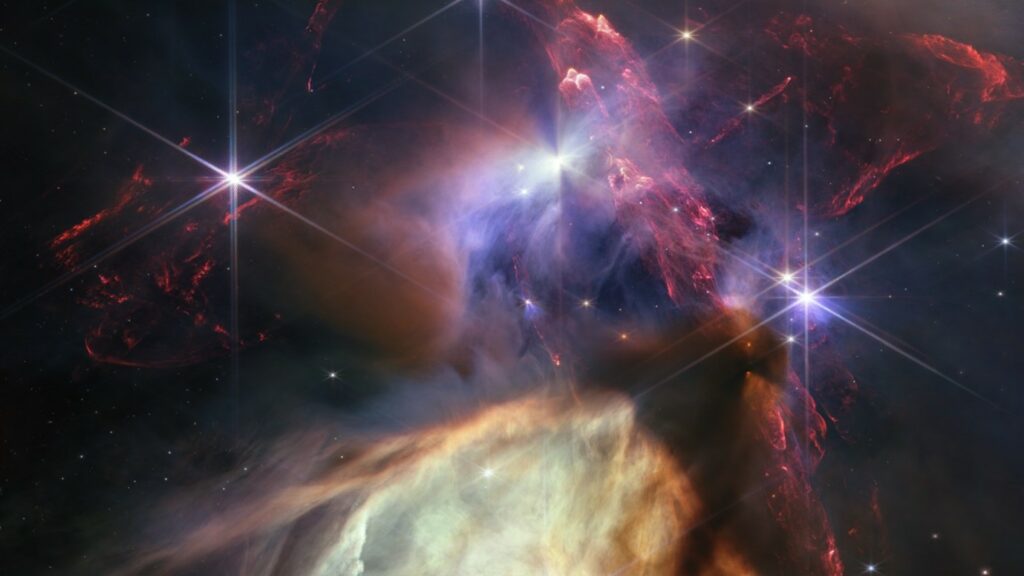The celebration of the first year since the launch of the James Webb Space Telescope (JWST) has been marked by a breathtaking revelation – a novel view into the birth of stars. NASA has recently released an exquisite image captured by JWST that provides a new perspective on stellar creation, unlike anything seen before.
This striking new image from JWST showcases the Rho Ophiuchi cloud complex – the closest star-forming region to our planet. Although relatively small and tranquil, this star nursery’s vivid portrayal through the lens of JWST offers an intricate snapshot of the stellar drama unfolding approximately 390 light-years away from Earth.
Klaus Pontoppidan, a JWST project scientist at the Space Telescope Science Institute in Baltimore, Maryland, reflected on the significance of this cosmic tableau. “The JWST’s image of Rho Ophiuchi allows us to witness a fleeting phase in the stellar life cycle with unprecedented clarity,” Pontoppidan remarked. “Our Sun underwent a similar stage long ago. Now, we are privileged to witness the genesis of another star’s story.”
The image unveils the dramatic spectacle of jets erupting from several of the roughly 50 young stars cradled within the nursery, their forceful impact on the surrounding interstellar gas causing molecular hydrogen to blaze a vibrant red. These jets, much like a newborn stretching its arms for the first time, signify the young stars breaking free from their birth cocoons made of the remnants of the gas and dust that engendered them.
Visible too are the shadows of protoplanetary disks of gas and dust – the precursors to future planetary systems – encircling some of the luminescent young stars. In contrast, the darkest regions in the JWST image harbour protostars that are still in the process of being born within the Rho Ophiuchi complex.
Amongst this cosmic congregation of stars mostly comparable to or smaller than our sun, one star, S1, stands out with a significantly larger mass. This gigantic blue star has carved out a cave in the radiant yellow material around it, adding to the intricacy of the stellar landscape.
The image not only marks the JWST’s successful first year in space but also offers an exciting hint at what the future holds. The telescope’s ability to illuminate stellar birth in such an innovative light signal that the most thrilling discoveries are yet to come.
Reflecting on the groundbreaking achievements of JWST’s first year, NASA Administrator Bill Nelson stated, “In just one year, the James Webb Space Telescope has revolutionized our understanding of the cosmos, casting light into dust clouds and reaching far corners of the universe, illuminating them for the first time.” He further added, “Every new image is a new discovery, enabling scientists worldwide to pose and answer questions that were once unimaginable.

